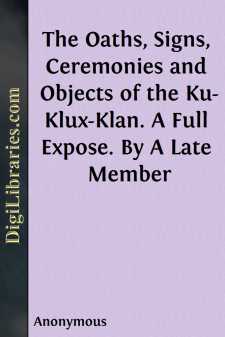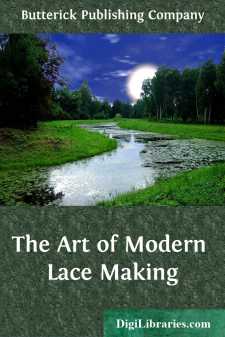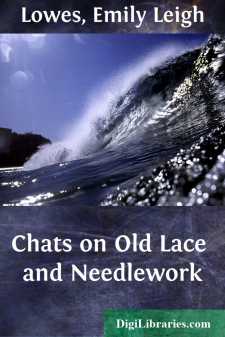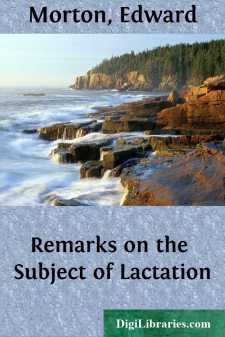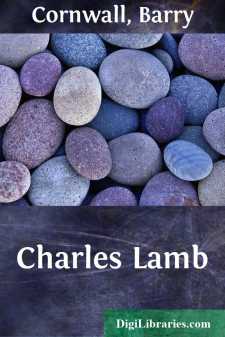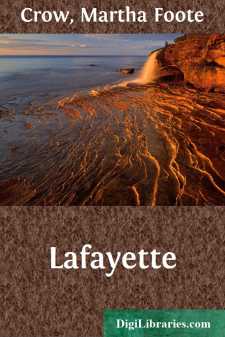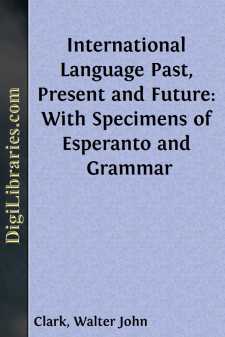Non-Classifiable
- Non-Classifiable 1768
Non-Classifiable Books
Sort by:
by:
Anonymous
PERSONAL. It does not matter who is the writer of the following pages. If it did, no inducement likely to be offered, would tempt him to publish his name. He has no desire to be tracked out by the Brothers of the Southern Cross, and he knows too much of their deathless hatred and hound-like pertinacity, their numbers, and the ramifications of their organization, already encroaching on southern Ohio,...
more...
ANCIENT AND MODERN METHODS. The art of making lace in one form or another has existed from the earliest ages. There are Scriptural references to various web-like fabrics, which were of rude construction, no doubt, but whose general characteristics were identical with those productions of modern skill which have for centuries been known as lace. Homer and other ancient writers constantly mention...
more...
I A BRIEF HISTORY OF LACE Early vestiges in Egypt—Lace found in St. Cuthbert's Tomb (685 A.D.)—Drawn Thread and Cutworks—Venetian Lace—Flanders Lace—French Laces—English Lace. In every other art or craft we can search the history of ages and find some vestiges or beginnings among the earlier civilisations. Possibly owing to the exquisite fragility of Lace, there is a complete absence...
more...
by:
Edward Morton
CHAPTER I. Of the Breast-Milk, &c. &c. No sooner has the child been ushered into the world than the breasts of the mother pour forth their milk for its sustenance. This bland fluid is secreted from the blood, and varies, in quality and quantity, according to the time which has elapsed from delivery, being peculiarly and wonderfully adapted at every period to the wants of the individual for...
more...
by:
Barry Cornwall
The biography of CHARLES LAMB lies within a narrow compass. It comprehends only few events. His birth and parentage, and domestic sorrows; his acquaintance with remarkable men; his thoughts and habits; and his migrations from one home to another,—constitute the sum and substance of his almost uneventful history. It is a history with one event, predominant. For this reason, and because I, in common...
more...
CHAPTER I A Boy of the French Nobility AMONG the rugged Auvergne Mountains, in the southern part of France, stands a castle that is severe and almost grim in its aspect. Two bare round towers flank the building on the right and on the left. Rows of lofty French windows are built across the upper part of the front, and the small, ungenerous doorway below has a line of portholes on either side that...
more...
PREFACE EXPERIMENTAL work in physical science rests ultimately upon the mechanical arts. It is true that in a well-appointed laboratory, where apparatus is collected together in greater or less profusion, the appeal is often very indirect, and to a student carrying out a set experiment with apparatus provided to his hand, the temptation to ignore the mechanical basis of his work is often irresistible....
more...
by:
Joseph Fisher
I do not propose to enter upon the system of landholding in Scotland or Ireland, which appears to me to bear the stamp of the Celtic origin of the people, and which was preserved in Ireland long after it had disappeared in other European countries formerly inhabited by the Celts. That ancient race may be regarded as the original settlers of a large portion of the European continent, and its land system...
more...
by:
Lewis Wright
CHAPTER I INTRODUCTORY Lantern Projection, as commonly understood, may be broadly subdivided into two branches: (A) The Projection of Lantern Slides, and (B) The Projection of Scientific Phenomena, Opaque Objects, Microscopic Specimens, &c., usually referred to broadly under the heading of 'Scientific Demonstration.' To these two classes may perhaps now be added a third, viz. The...
more...
IintroductoryIn dealing with the problem of the introduction of an international language, we are met on the threshold by two main questions: 1. The question of principle. 2. The question of practice. By the question of principle is meant, Is it desirable to have a universal language? do we wish for one? in short, is there a demand? The question of practice includes the inquiries, Is such a language...
more...


